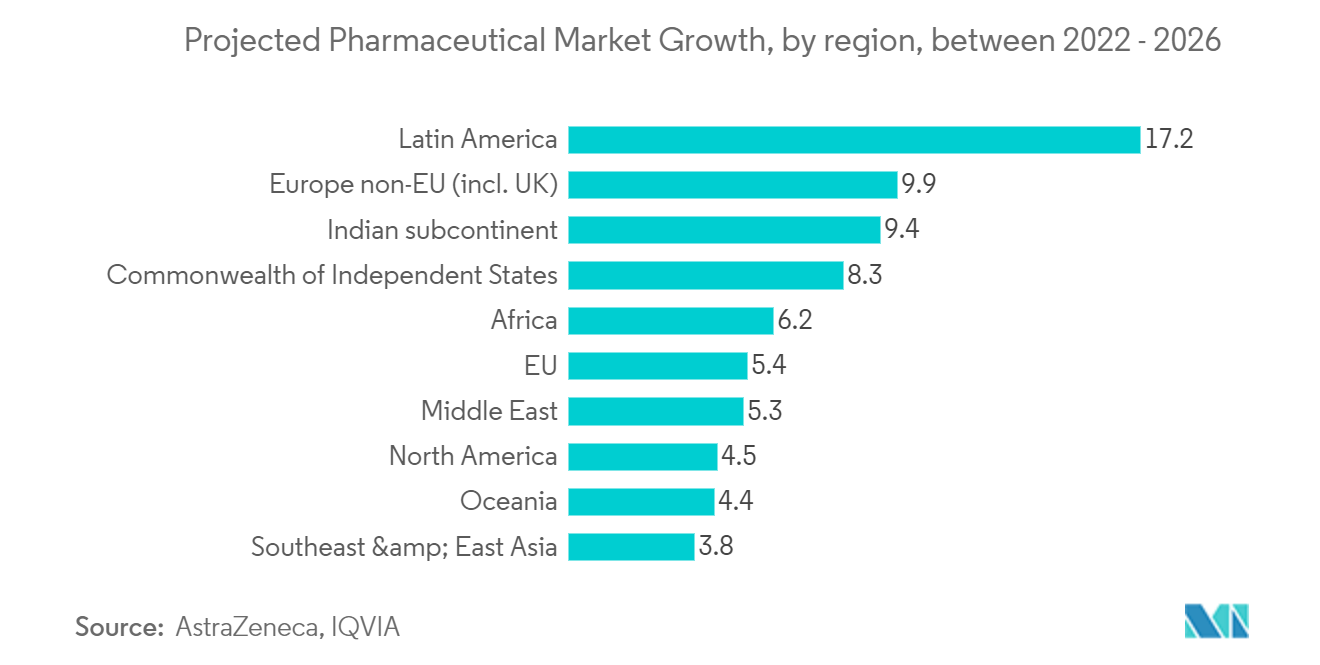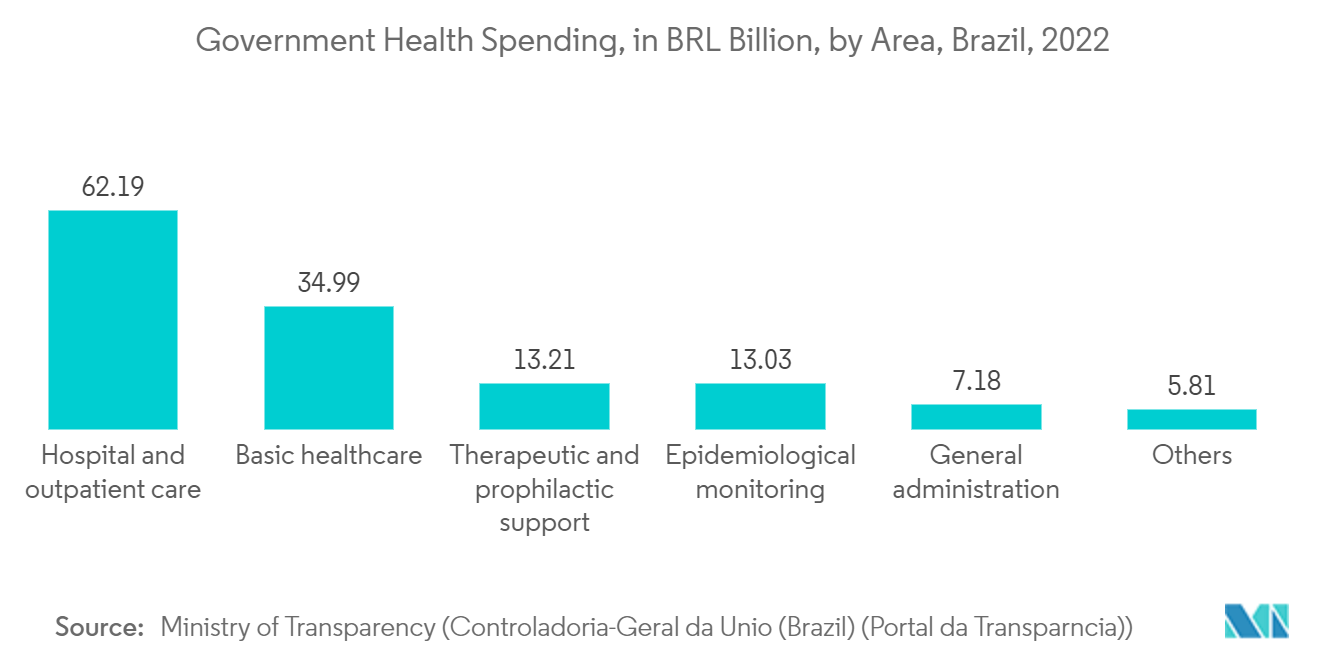Market Trends of LA Blister Packaging Industry
Pharmaceutical Segment to be the Fastest-growing End-user Industry
- The pharmaceutical sector poses a different set of demands for blister packaging solutions concerning insulation from external surroundings, cost-effectiveness, high levels of protection, and ease of handling and retaining the effectiveness of the medicine. These packs are uniquely suited to meet stringent regulations and are highly valued for their protective properties, cost-effectiveness, adaptability, and pharmaceutical and packaging industry requirements.
- Adherence is improved when medicines are blister packaged because consumers can track their medications and dosage. The unit dosage feature of blisters reduces the risk of incorrect dosing. Pharmaceutical pills, capsules, or lozenges are frequently packaged in blister packs as unit doses. The main benefits of unit-dose blister packs over other packaging techniques for pharmaceutical products are the assurance of product/packaging integrity (including shelf life) of each dose and the capacity to produce a compliance pack or calendar pack by printing the days of the week above each dose.
- Drugs are typically packaged in blister packs because they are more protected from gas and moisture, giving them a longer shelf life. Product stability is challenging to achieve in situations of high humidity and temperature. Temperature swings that can happen during shipping can be mitigated by using blistering materials.
- For pharma packaging, there are primarily two types of blister packing. The lid of the first type is made of clear plastic or a composite material made of plastic, paper, and foil, while the cavity is made of clear thermoformed plastic. The second type's cavity is caused by cold stretching, and foil is a crucial component of both webs. PVC, PCTFE, PVDC, and thermoform blisters for less sensitive products or Alu-Alu cold-form blisters for more sensitive Active Pharmaceutical Ingredients (APIs) are a few solutions available in blister packaging for the pharmaceutical industry.
- Latin America is a growing market for pharmaceutical blister packaging due to the increased use of creative packaging techniques and a rising need for medications in the region. The region is predicted to have significant growth in the following years. This results from rising medical expenses and the demand for specialty medications.

Brazil is Expected to Hold Major Market Share
- Many large companies across all industries have established facilities in Brazil due to the government's simultaneous efforts to improve the business environment and maintain Brazil's steady growth in relatively cheap productive capacity. This has enabled these companies to serve both domestic markets and North America. As a result, the demand for blister packaging is anticipated to develop significantly fast in the region due to rising domestic production.
- Several plastic polymers, including PVC, PVDC, PCTFE, COP, and others, are used to create blister packaging. PVC is the most used blister packing material, sometimes known as polyvinyl chloride. The cost-effectiveness of PVC is its key benefit. Brazil saw excellent results from the government's reduction in PP import taxes, which was announced at the start of the previous week. There were more proposals, offers, and deals made for imported material.
- Local demand for PP expanded steadily once COVID-19 limits were relaxed, but the supply remained low and was not significant enough to meet this need. This decision to temporarily remove the import charge will help the supply activity of PP in the Brazilian market and market sentiments in that country. PP prices are also projected to stop climbing in the following months and may even take a minor downward trajectory.
- According to the Ministry of Economy, the Brazilian government has temporarily lowered import duties on suspension-produced polyvinyl chloride and polypropylene copolymers (PPC) from 11.2% to 4.4% starting on August 5 and lasting until August 4, 2023. The import of either product is not subject to a set quota. Products listed under the HS code 3902.3000 were considered for polypropylene copolymer. The products with the HS number 3904.1010 were considered for suspension-made PVC. Import duties on ethylene and alpha-olefin copolymer products with densities less than 0.94 that fall under the HS code 3901.4000 were also lowered from 11.2% to 3.3%.
- The pharmaceutical and healthcare sectors are witnessing a surge in demand for blister packaging due to rising medical product demand in Brazil. Following packaging standards for pharmaceutical products is crucial for pharmaceutical producers, which drives the need for packaging techniques like blister packing. According to the International Trade Administration US Department of Commerce, with a 9.1% GDP expenditure on healthcare, Brazil has the largest pharmaceutical and healthcare market in all of Latin America. The most considerable profits in the region are made by the local private laboratories, which highlights the expanding need for pharmaceutical blister packaging suppliers in the area as the number of solid dosages development rises.
- According to the Ministry of Transparency, Brazil's government health spending in 2022 was estimated at BRL 136.41 billion (USD 26.05 billion). This is expected to drive the demand for blister packaging in the region.

